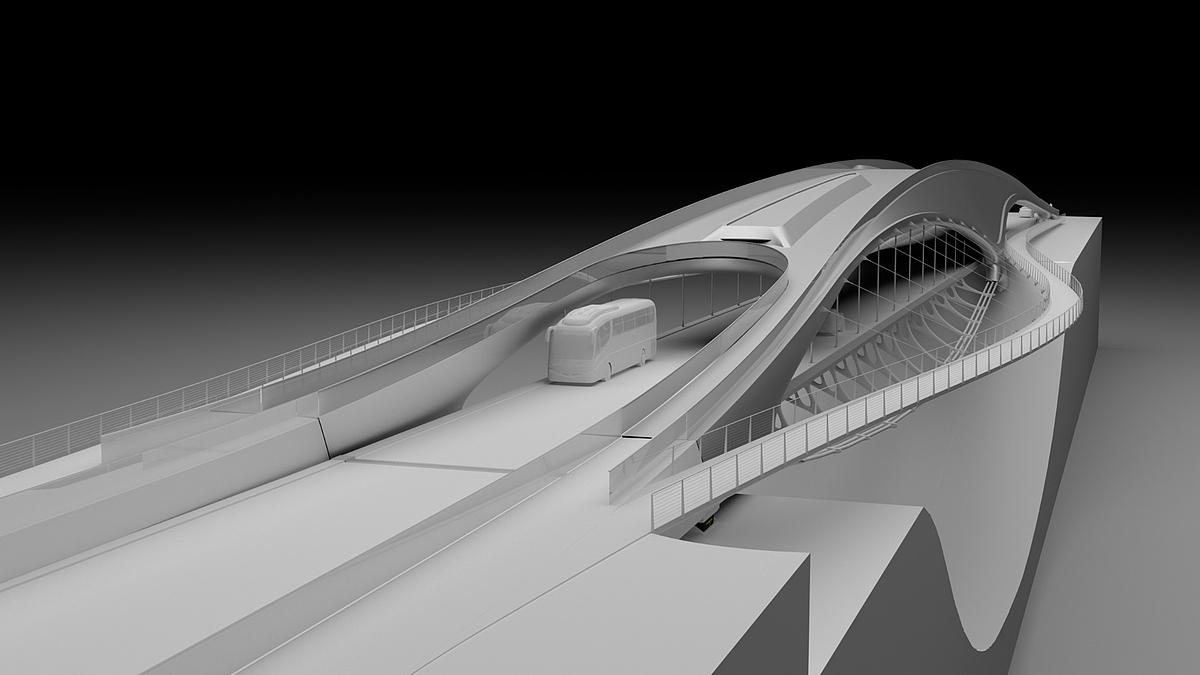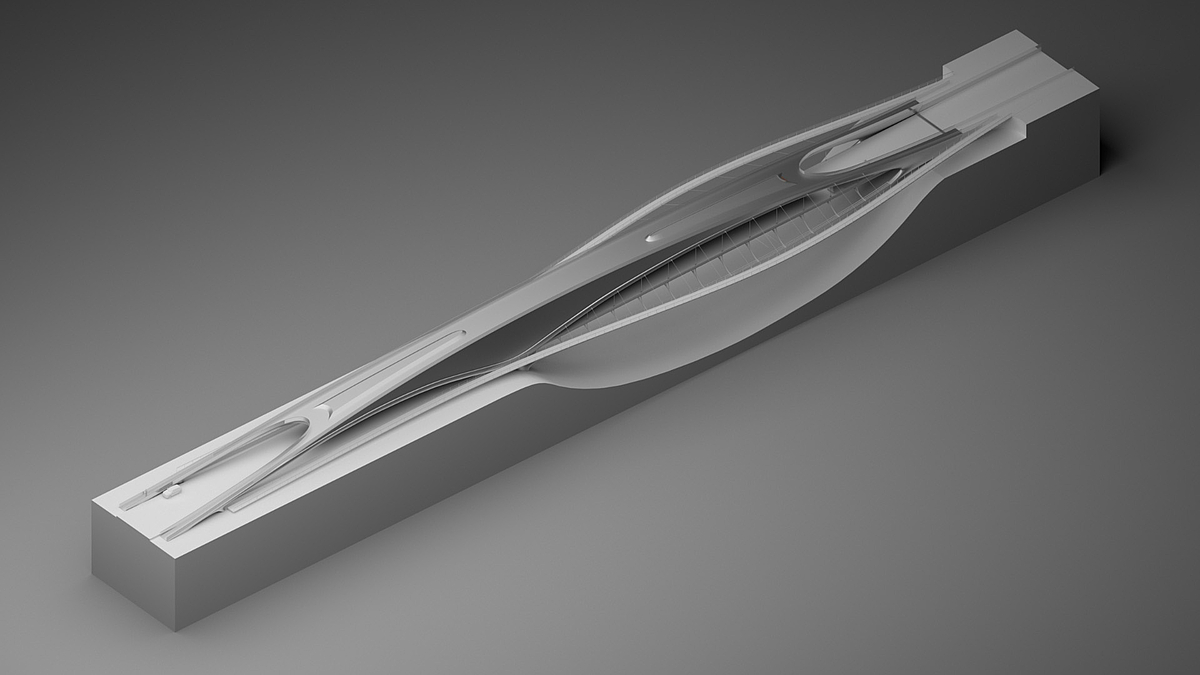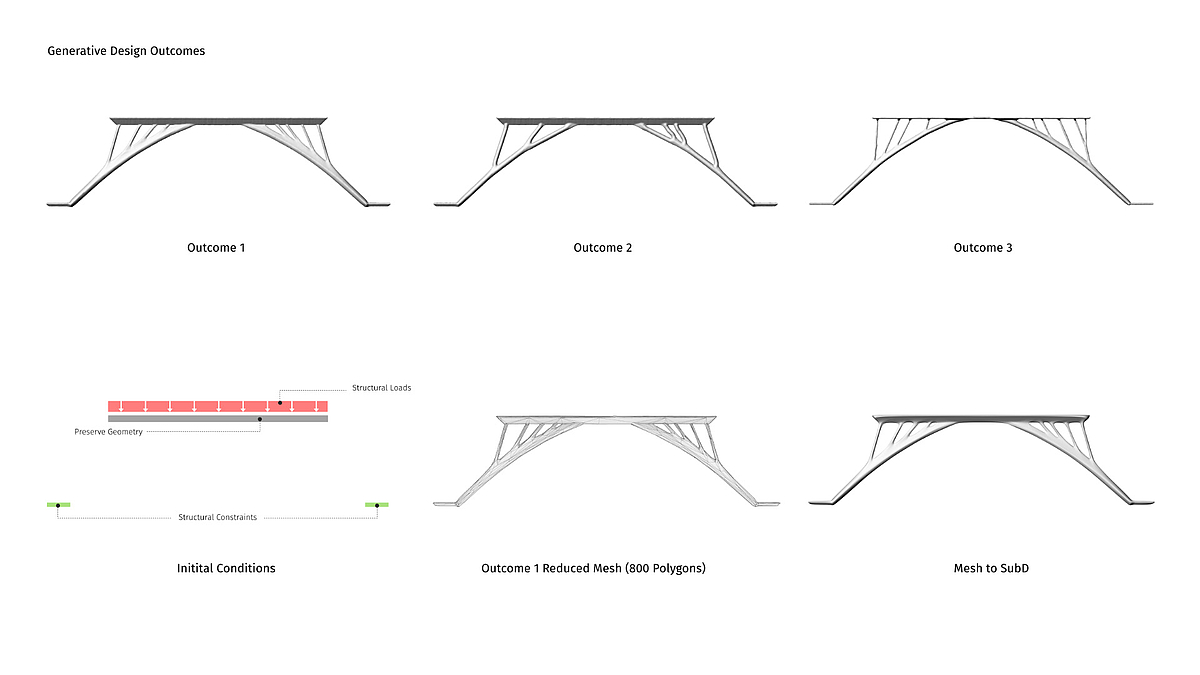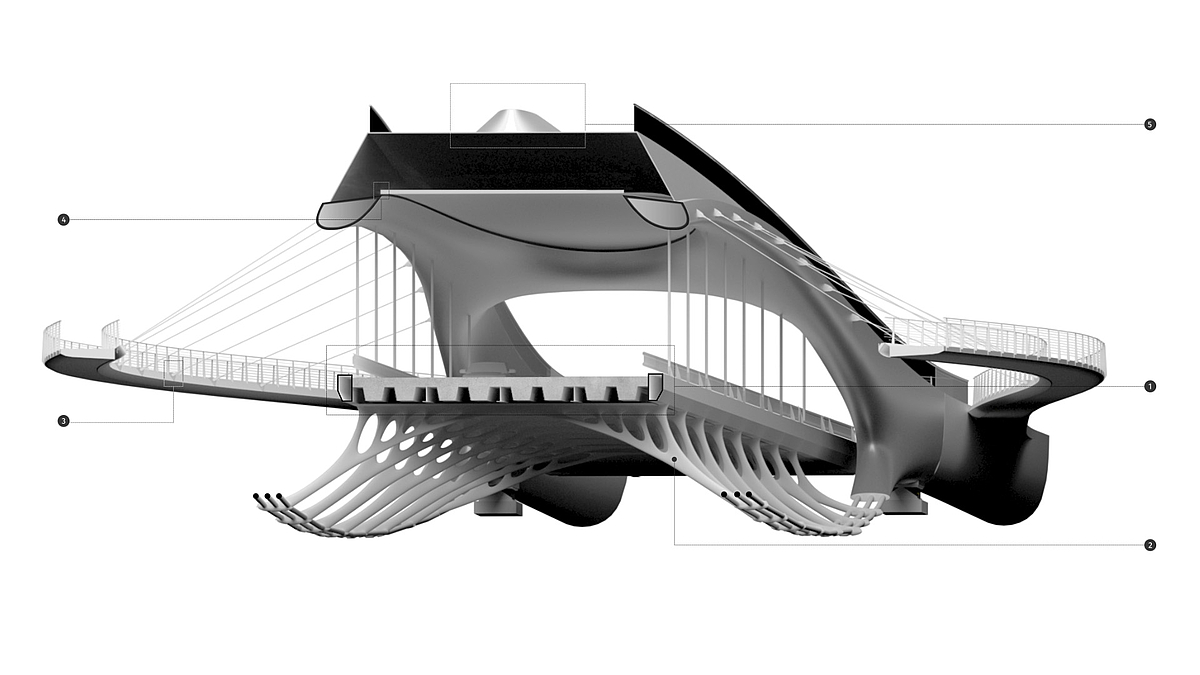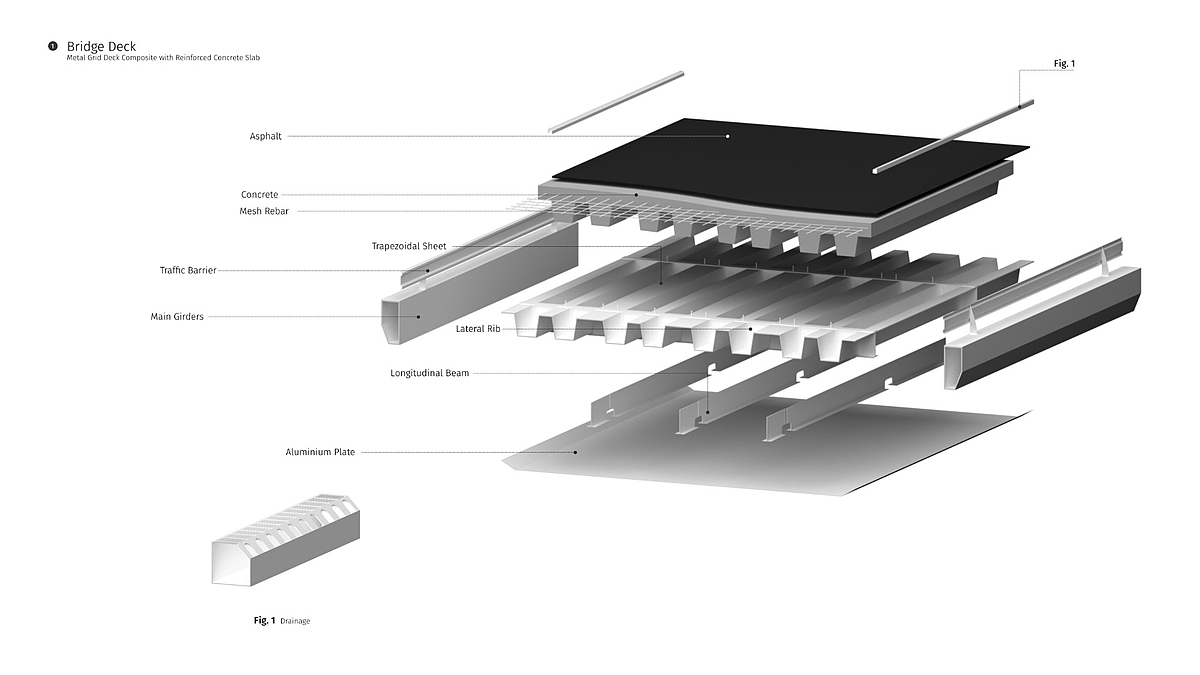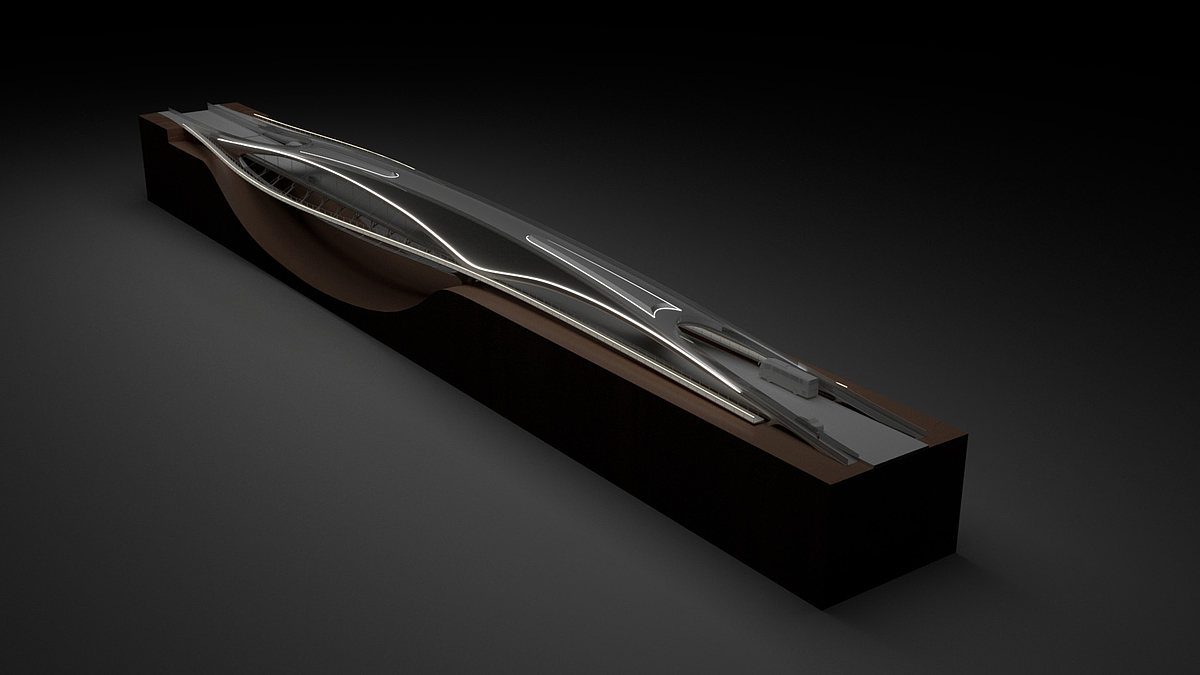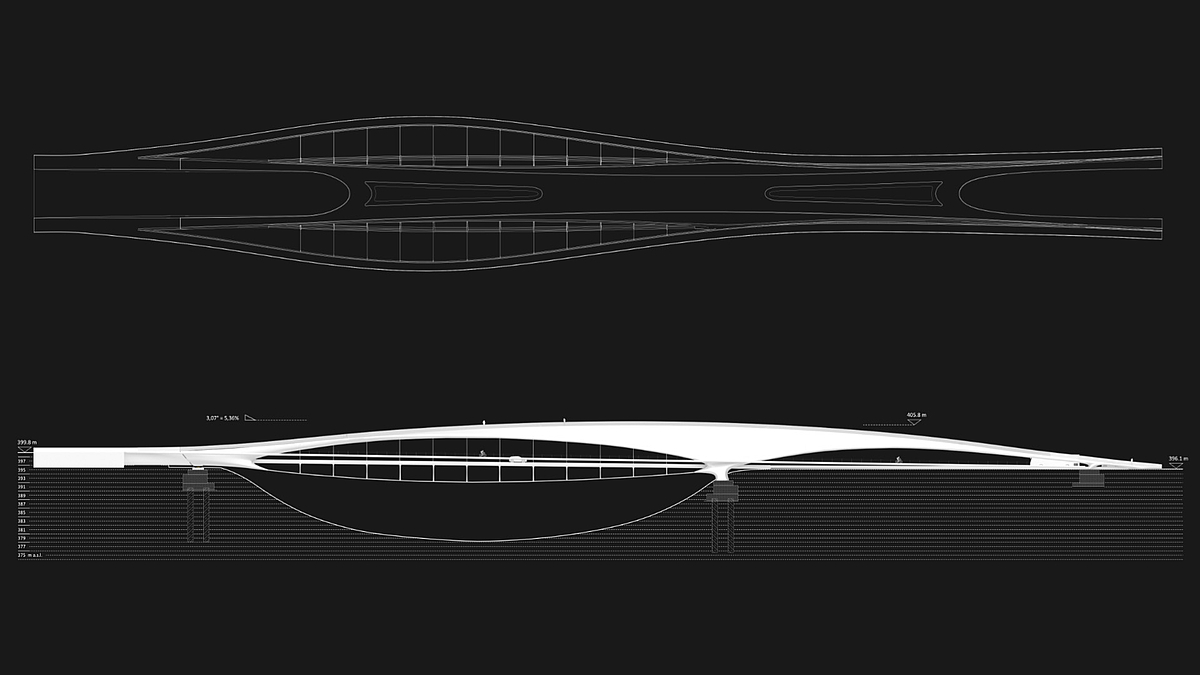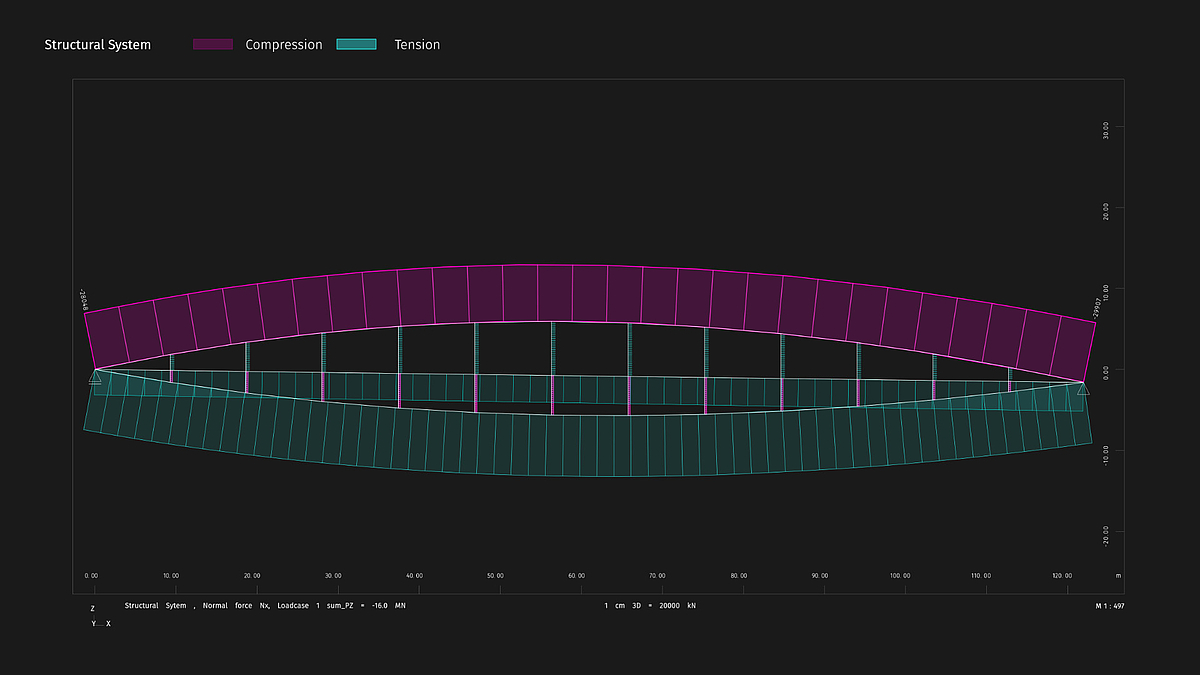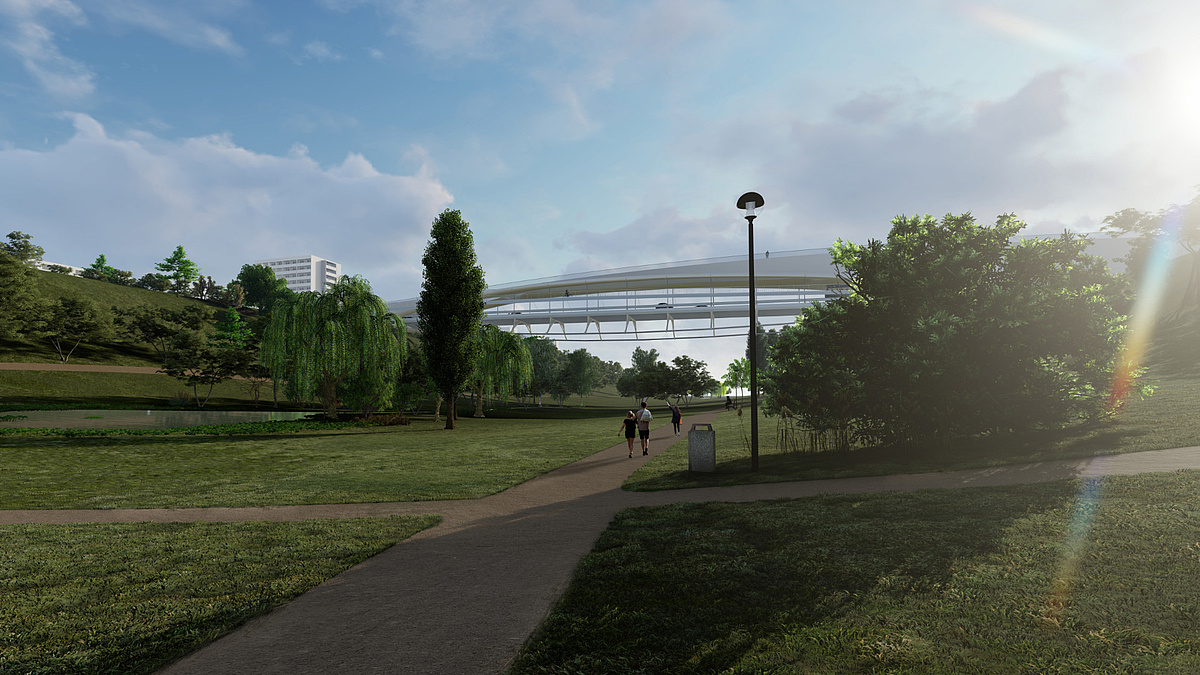Abstract
With the development of additive manufacturing, complexity is increasingly gaining the upper hand over mass. In the theoretical part of the thesis, computer-aided methods of static optimisation such as generative design and shape optimisation, as well as their application in bridge construction, were investigated. While shape optimisation is based on the initial shape, generative design can be carried out with only static boundary conditions given as a starting point. In contrast to shape optimisation, generative design not only reduces mass, but adds material where it is needed.
As a speculative exercise, different bridge designs were optimised and static boundary conditions of existing bridges were replicated in a generative process to investigate the deviation of generatively designed structures from the initial shape.
Design
The design aims to provide a replacement for a dilapidated bridge in Kladno, Czech Republic. The aim was to improve the urban realisation of the structure compared to its current state. The interference of the bridge into the valley below was avoided by using a cantilever structure.
The bridge structure is executed as a tied-arch bridge. The load transfer between cable and tension band is ensured by generatively designed girders. A better traffic separation is provided by the lateral paths designed as ring girders, as well as a walkable shell structure spanning between the two arches.
The thesis offers an insight into the potential of generative design to influence the creative process.
Info
Author:
Adam Unger
First Examiner:
Prof. Mirco Becker
Second Examiner:
Prof. Dr.-Ing. Dominik Schillinger
Summer Semester
2021

